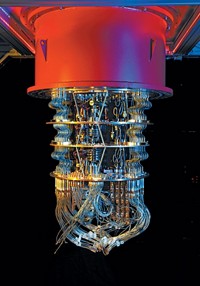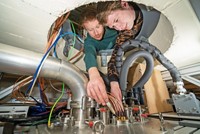Advertisement
Grab your lab coat. Let's get started
Welcome!
Welcome!
Create an account below to get 6 C&EN articles per month, receive newsletters and more - all free.
It seems this is your first time logging in online. Please enter the following information to continue.
As an ACS member you automatically get access to this site. All we need is few more details to create your reading experience.
Not you? Sign in with a different account.
Not you? Sign in with a different account.
ERROR 1
ERROR 1
ERROR 2
ERROR 2
ERROR 2
ERROR 2
ERROR 2
Password and Confirm password must match.
If you have an ACS member number, please enter it here so we can link this account to your membership. (optional)
ERROR 2
ACS values your privacy. By submitting your information, you are gaining access to C&EN and subscribing to our weekly newsletter. We use the information you provide to make your reading experience better, and we will never sell your data to third party members.
Physical Chemistry
Single-Atom Transistor
Nanoelectronics: Device’s performance bodes well for quantum computing
by Stu Borman
February 27, 2012
| A version of this story appeared in
Volume 90, Issue 9
In work that could advance the development of quantum computers, researchers have created a transistor that consists of a single atom positioned precisely between two electrodes in a silicon substrate. Quantum computers could perform some calculations not possible on current computers, such as solving the Schrödinger equation for large molecules.
Quantum computing specialist Michelle Y. Simmons of the University of New South Wales, in Australia, and coworkers prepared the transistor. They used scanning tunneling microscopy, lithography, and phosphine chemistry to place, with single-lattice-site spatial accuracy, an individual phosphorus atom between electrodes in a silicon device (Nat. Nanotechnol., DOI: 10.1038/nnano.2012.21). Such precise positioning hadn’t been achieved before.

Single-atom transistors could be combined to give integrated circuits of unprecedented density. But creating such transistors is painstaking, and the feasibility of making devices that comprise millions or billions of them is not yet known. The transistor operates only at close to absolute zero, also limiting applications for now.
Nevertheless, the phosphorus transistor represents a step toward quantum computers. Quantum computers would achieve greater power and speed by encoding information in qubits, which adopt more states than just the two (0 and 1) in conventional computers bits. Precise atom positioning would be required to interrogate the information in qubits accurately.
Device modeler Asen Asenov of the University of Glasgow believes the experimentation is “ground-breaking.” Molecular device fabricator Robert A. Wolkow of the University of Alberta believes that Simmons’ group and others reported substantially similar results earlier. Some of the study’s simulations have technical deficiencies, Asenov adds.
Quantum computing expert Bruce E. Kane of the University of Maryland notes that the one-atom transistor is not currently practical for conventional devices, nor does it carry out quantum operations. But he calls the work “an experimental and engineering tour de force” and believes Simmons’ group now has the requisite tools to begin building quantum computers “that would go beyond the current state of the art.”





Join the conversation
Contact the reporter
Submit a Letter to the Editor for publication
Engage with us on Twitter